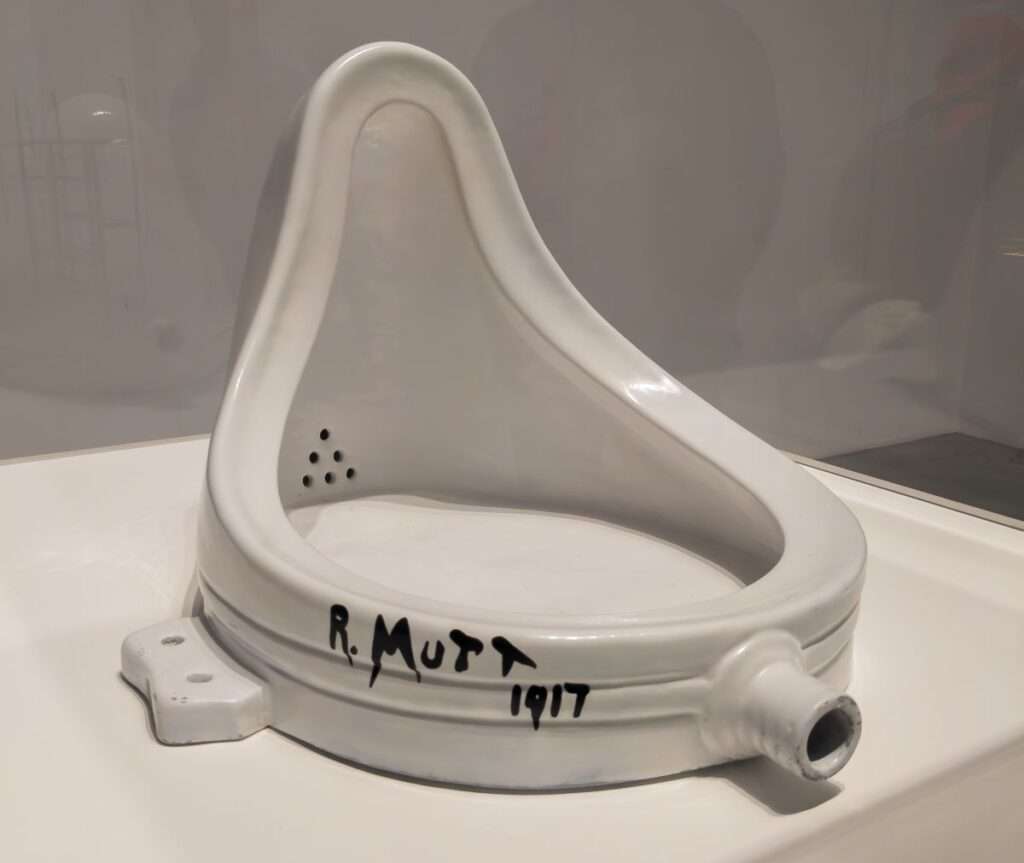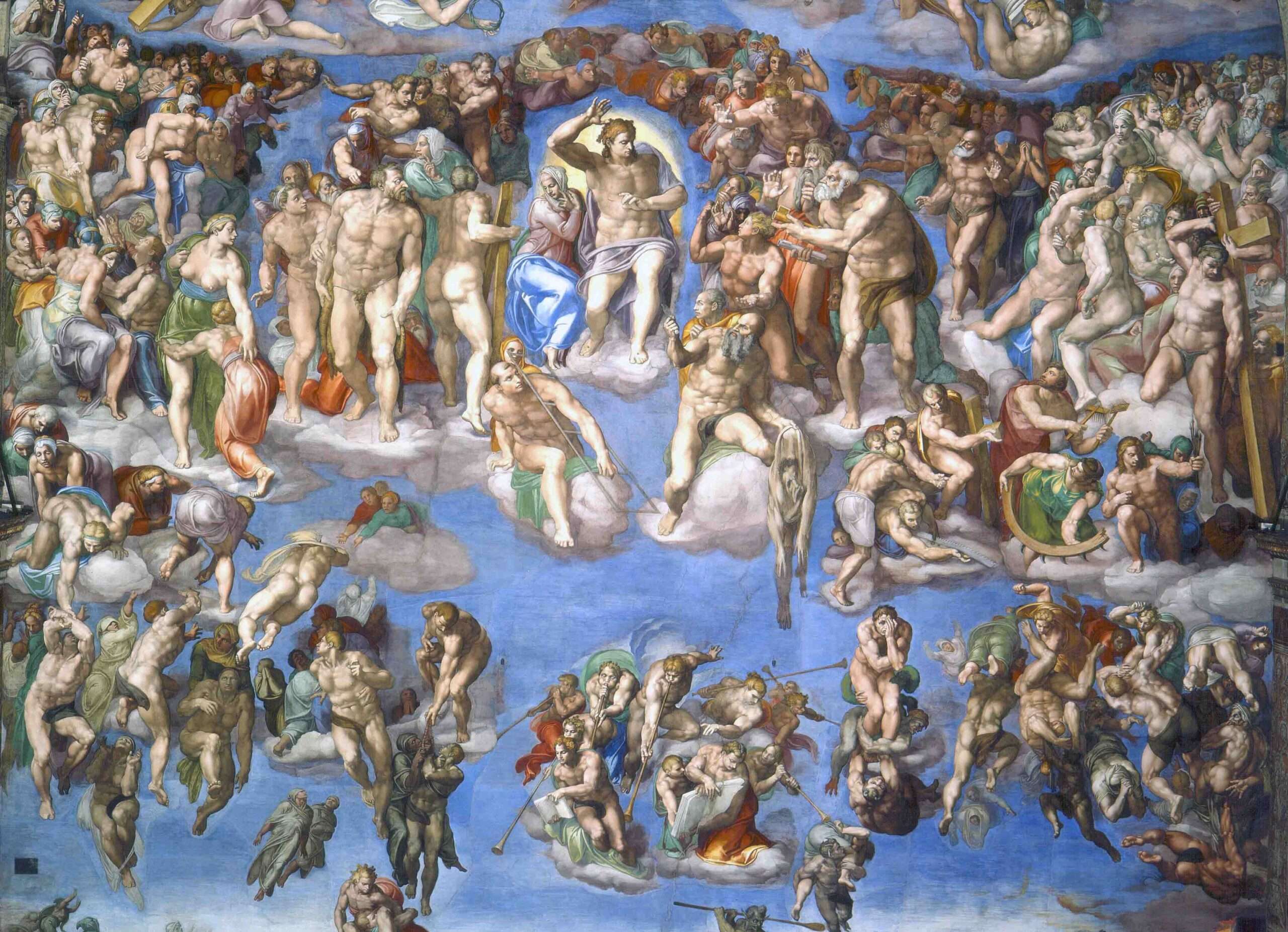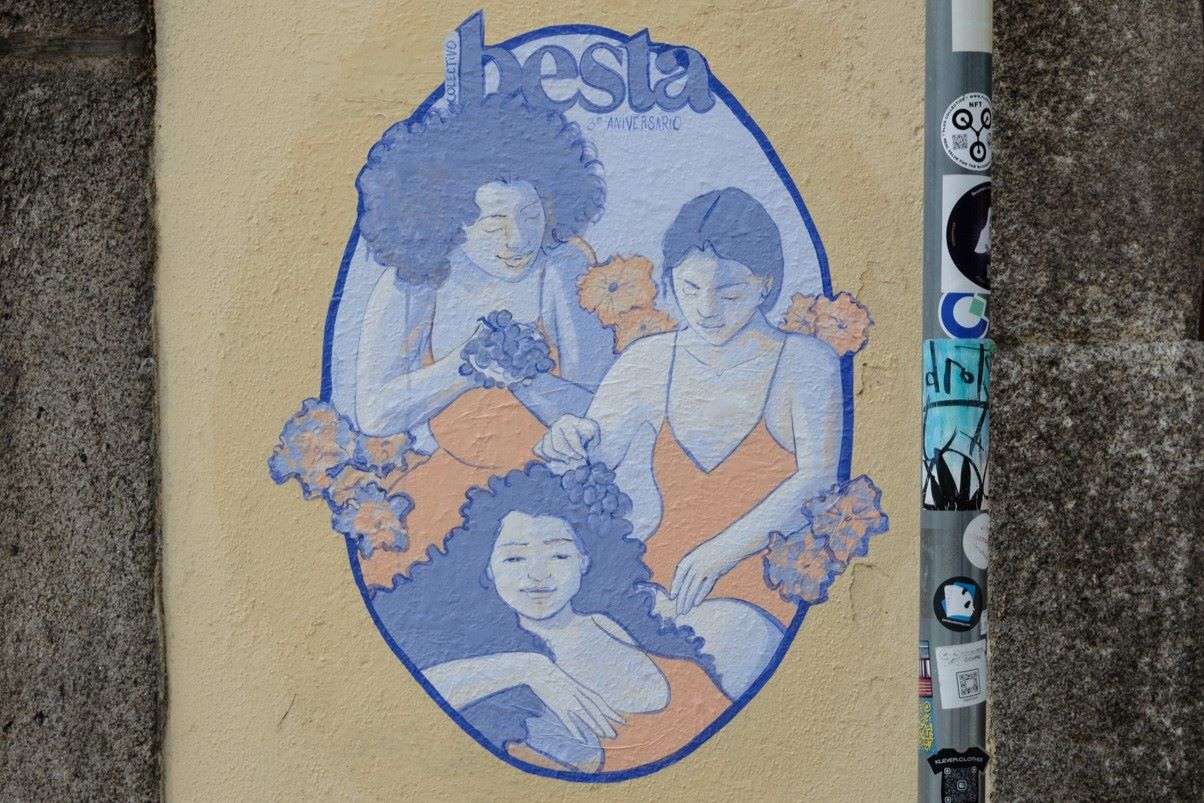Imagine walking into a museum and seeing a urinal, not in the bathroom, but displayed on a pedestal as a work of art. It seems strange, doesn’t it? However, this actually happened and had a tremendous impact on the history of modern art. And it’s all thanks to Marcel Duchamp.
Marcel Duchamp and the Artwork That Defied Conventions
Today we’re going to talk about Marcel Duchamp and his iconic piece, the Fountain. It’s a common porcelain urinal, turned upside down and signed with a pseudonym. This simple choice revolutionized the way we perceive art and raised profound questions about what can be considered art.
The Dadaist Movement: Historical and Artistic Context
To understand this work, it’s essential to grasp the artistic movement and historical context in which it was created. We’re talking about the Dadaist movement, or Dada, which emerged during the First World War. At that time, scientific advancements were used for destructive purposes, such as producing heavy weaponry and poisonous gas. Consequently, many artists and intellectuals felt disillusioned with society.
The Dadaists sought to break away from the philosophies and policies they believed had led to the war. For them, logic and reason had failed humanity, leading to conflict. Therefore, their goal was to challenge established norms. By utilizing absurdity and irrationality, they intended to awaken the public from its apathy toward war, capitalism, and rampant nationalism.
The Founding of Dadaism and Refuge in Switzerland
In 1916, a group of artists and intellectuals founded Dadaism in Zurich, neutral Switzerland. Many had taken refuge there from the war ravaging Europe. This multicultural and pacifist environment became the ideal breeding ground for a movement that questioned the traditional values of Western society.
Marcel Duchamp’s “Fountain”: A Milestone in Art History
The highlight of Dadaism occurred in 1917 when Marcel Duchamp presented the Fountain. Duchamp submitted this piece to the Society of Independent Artists in New York. Although the organization claimed to accept all works upon payment of a $6 fee, the organizing committee refused to exhibit the urinal, deeming it inappropriate. This rejection led Duchamp to write a controversial article in an art journal, where he questioned the acceptance criteria and the very definition of art. The publication sparked significant debate in artistic circles, challenging the boundaries between art and common objects.
The Concept of Readymade: Revolutionising Art
In that article, Duchamp introduced the concept of the readymade. This term refers to everyday objects, mass-produced, that the artist selects and presents as works of art. The intention was to challenge the traditional notion that art must be something created by the artist’s hand. Instead, the idea and intention behind the work were valued. For example, the Fountain is a perfect readymade. Duchamp selected a common urinal, placed it on a pedestal, signed it with the pseudonym “R. Mutt”—a reference to the J. L. Mott Iron Works company—and presented it as art. By doing so, he questioned the limits of what we consider a work of art.
Questioning the Meaning of Art
By transforming an everyday object into art, Duchamp forced the public to reflect: What is art? Is it the piece itself? Is it the provocation of presenting it in an artistic context? Or is it the conceptual idea behind the work? All these questions are central to the appreciation of the Fountain. Moreover, they remain relevant in contemporary art debates.
Challenging Aesthetic Canons
Duchamp demonstrated that art does not need to conform to traditional standards of beauty or technical skill. Instead, it can serve as a means to stimulate critical thinking and challenge established perceptions. This approach paved the way for future movements that value ideas and concepts over aesthetic form. Thus, art became more accessible and democratic.
The Paradox of Anti-Art
Although Dadaism and works like the Fountain are often referred to as anti-art, they are themselves artistic manifestations. This paradox lies in the fact that, by rejecting traditional art conventions, these movements expand the definition of art. They invite us to rethink not only what art is but also its role in society. Therefore, even as anti-art, they enrich the artistic world.
The Legacy and Rise of Conceptual Art and Marcel Duchamp
From these revolutionary ideas emerged what we now call Conceptual Art. In this artistic genre, the focus falls on the idea or concept behind the work rather than its aesthetic execution. Duchamp profoundly influenced this movement, and his mark continues to be present in contemporary art. Today, many artists follow this path, exploring new forms of expression.
Conclusion
Nowadays, the story of how a urinal became art is more than a curious anecdote. In fact, it’s a testament to the transformative power of creativity and the courage to question established norms. Marcel Duchamp challenged the world to see beyond appearances and find meaning in unexpected places. But this is a whole another topic, that we’ll cover in a future article (and video!). Stay tuned with our blog!
Discover More at Our Art Gallery in Porto
If the absurd story of Duchamp’s urinal has caught your eye, we invite you to visit our art gallery in Porto, Colectivo Besta. Here, you can explore artworks by talented local and emerging artists and discuss art history and techniques with our team. Whether at our physical gallery in Porto or through our online store, we are eager to share our passion for art and help you find unique pieces that resonate with your artistic sensibilities. Come visit us and immerse yourself in a world of art that’s both inspiring and accessible! Or drop us a message if you have any questions!





